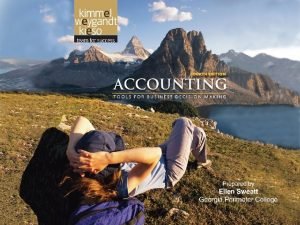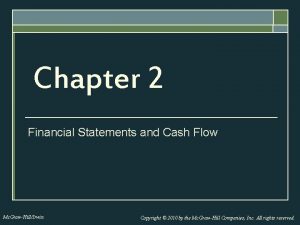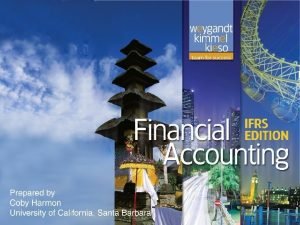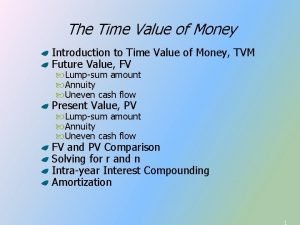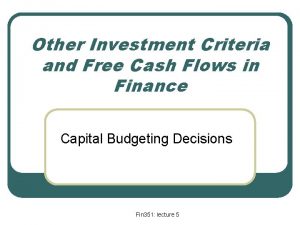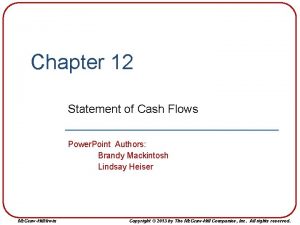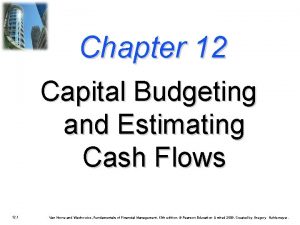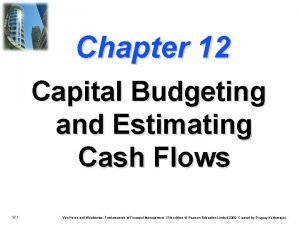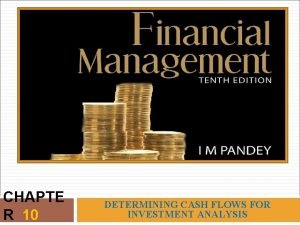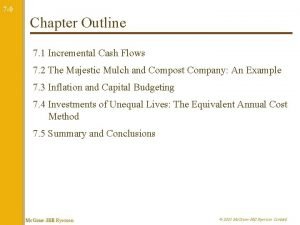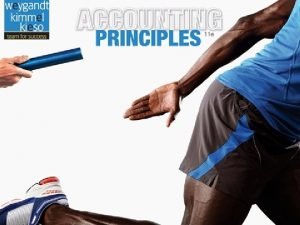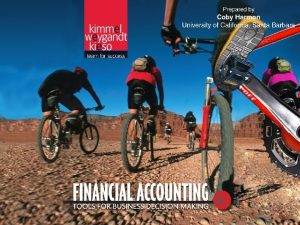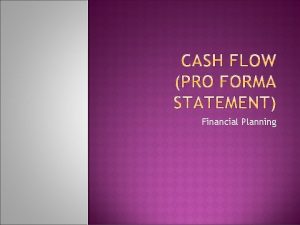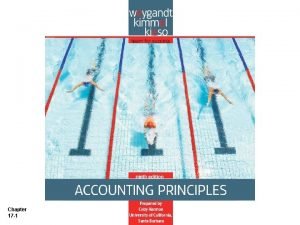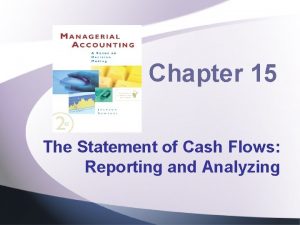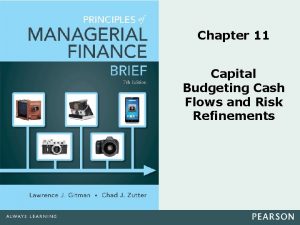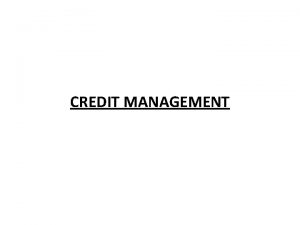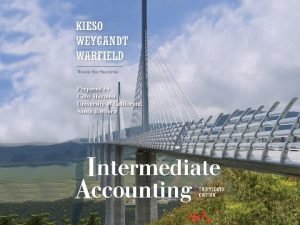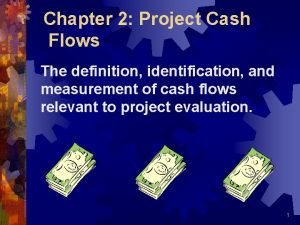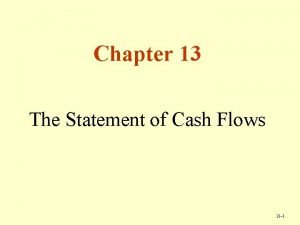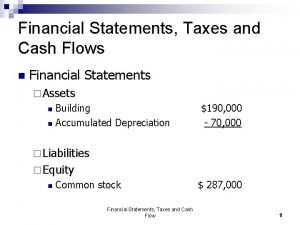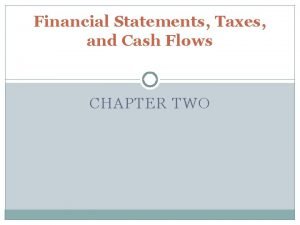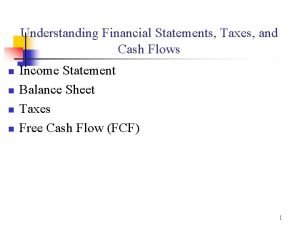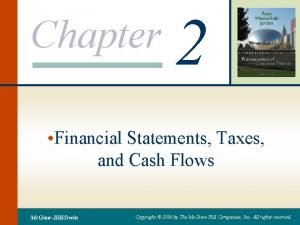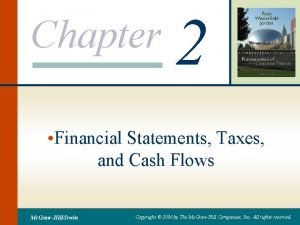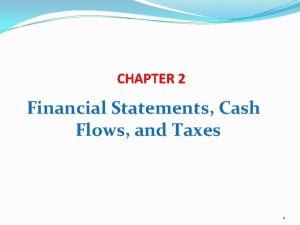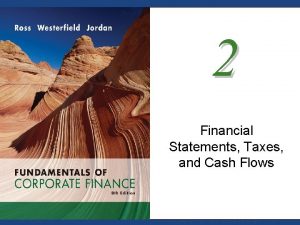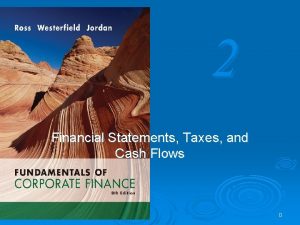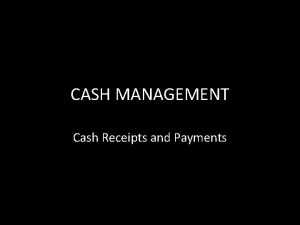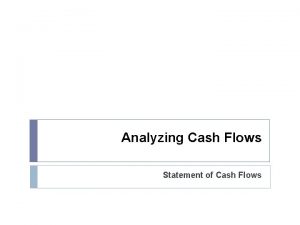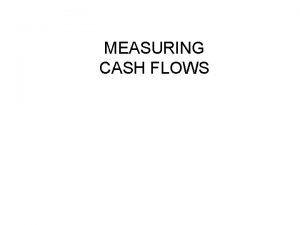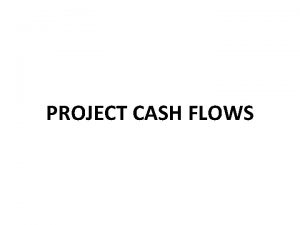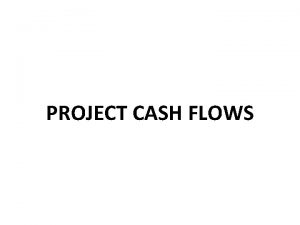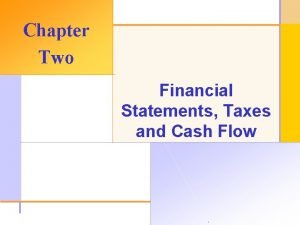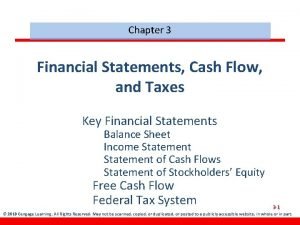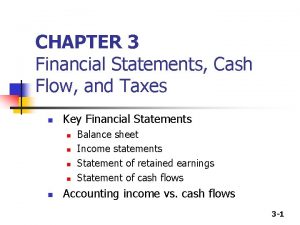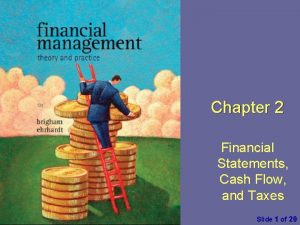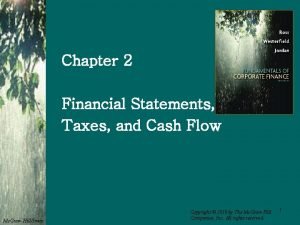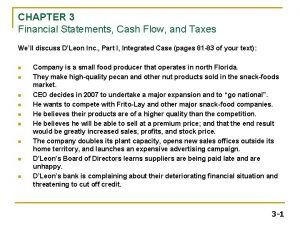2 Financial Statements Taxes and Cash Flows 0





















- Slides: 21

2 Financial Statements, Taxes, and Cash Flows 0

Key Concepts and Skills Ø Know the difference between book value and market value Ø Know the difference between accounting income and cash flow Ø Know the difference between average and marginal tax rates Ø Know how to determine a firm’s cash flow from its financial statements 1

Chapter Outline Ø The Balance Sheet Ø The Income Statement Ø Taxes Ø Cash Flow 2

Balance Sheet The balance sheet is a snapshot of the firm’s assets and liabilities at a given point in time Ø Assets are listed in order of decreasing liquidity Ø l l Ø Ease of conversion to cash Without significant loss of value Balance Sheet Identity l Assets = Liabilities + Stockholders’ Equity 3

The Balance Sheet - Figure 2. 1 4

Net Working Capital and Liquidity Ø Net Working Capital l Ø Current Assets – Current Liabilities Positive when the cash that will be received over the next 12 months exceeds the cash that will be paid out Usually positive in a healthy firm Liquidity l l Ability to convert to cash quickly without a significant loss in value Liquid firms are less likely to experience financial distress But liquid assets earn a lower return Trade-off to find balance between liquid and illiquid assets 5

US Corporation Balance Sheet – Table 2. 1 6

Market Vs. Book Value The balance sheet provides the book value of the assets, liabilities, and equity. Ø Market value is the price at which the assets, liabilities , or equity can actually be bought or sold. Ø Market value and book value are often very different. Why? Ø Which is more important to the decision-making process? Ø 7

Example 2. 2 Klingon Corporation KLINGON CORPORATION Balance Sheets Market Value versus Book Value Book Market Assets NWC NFA $ 400 700 1, 100 Book Market Liabilities and Shareholders’ Equity $ 500 LTD 1, 100 SE 1, 600 $ 500 600 1, 100 1, 600 8

Income Statement The income statement is more like a video of the firm’s operations for a specified period of time. Ø You generally report revenues first and then deduct any expenses for the period Ø Matching principle – GAAP says to show revenue when it accrues and match the expenses required to generate the revenue Ø 9

US Corporation Income Statement – Table 2. 2 10

Taxes The one thing we can rely on with taxes is that they are always changing Ø Marginal vs. average tax rates Ø l l Ø Marginal tax rate – the percentage paid on the next dollar earned Average tax rate – the tax bill / taxable income Other taxes 11

US Corporate Tax Table 12

Example: Marginal Vs. Average Rates Ø Suppose your firm earns $4 million in taxable income. l l l Ø What is the firm’s tax liability? What is the average tax rate? What is the marginal tax rate? If you are considering a project that will increase the firm’s taxable income by $1 million, what tax rate should you use in your analysis? 13

The Concept of Cash Flow Cash flow is one of the most important pieces of information that a financial manager can derive from financial statements Ø The statement of cash flows does not provide us with the same information that we are looking at here Ø We will look at how cash is generated from utilizing assets and how it is paid to those that finance the purchase of the assets Ø 14

Cash Flow From Assets Ø Cash Flow From Assets (CFFA) = Cash Flow to Creditors + Cash Flow to Stockholders Ø Cash Flow From Assets = Operating Cash Flow – Net Capital Spending – Changes in NWC 15

Example: US Corporation – Part I OCF (I/S) = EBIT + depreciation – taxes = $547 Ø NCS ( B/S and I/S) = ending net fixed assets – beginning net fixed assets + depreciation = $130 Ø Changes in NWC (B/S) = ending NWC – beginning NWC = $330 Ø CFFA = 547 – 130 – 330 = $87 Ø 16

Example: US Corporation – Part II CF to Creditors (B/S and I/S) = interest paid – net new borrowing = $24 Ø CF to Stockholders (B/S and I/S) = dividends paid – net new equity raised = $63 Ø CFFA = 24 + 63 = $87 Ø 17

Cash Flow Summary Table 2. 5 18

Quick Quiz Ø Ø What is the difference between book value and market value? Which should we use for decisionmaking purposes? What is the difference between accounting income and cash flow? Which do we need to use when making decisions? What is the difference between average and marginal tax rates? Which should we use when making financial decisions? How do we determine a firm’s cash flows? What are the equations and where do we find the information? 19

2 End of Chapter 20
 Flow chapter 2
Flow chapter 2 The cash budget shows anticipated cash flows
The cash budget shows anticipated cash flows 2-2 journal: financial statements and cash flow management
2-2 journal: financial statements and cash flow management Taxes payable cash flow statement
Taxes payable cash flow statement Pv of cash flows formula
Pv of cash flows formula Incremental cash flow
Incremental cash flow Discounted payback period formula
Discounted payback period formula Cash flow indirect method
Cash flow indirect method How to calculate incremental cash flows
How to calculate incremental cash flows Incremental cash flows
Incremental cash flows Working capital investment example
Working capital investment example Examples of incremental cash flows
Examples of incremental cash flows Statement of cash flows order
Statement of cash flows order Format of indirect method of cash flow statement
Format of indirect method of cash flow statement Cash flow pro
Cash flow pro Prepaid expenses in cash flow statement
Prepaid expenses in cash flow statement The statement of cash flows reports
The statement of cash flows reports How to find change in working capital
How to find change in working capital Cost of granting credit
Cost of granting credit Chapter 23 statement of cash flows
Chapter 23 statement of cash flows Relevant cash flows definition
Relevant cash flows definition The statement of cash flows classifies items as
The statement of cash flows classifies items as

